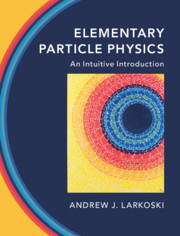Refine listing
Actions for selected content:
17000 results
Part III - Planetary Systems and Life
-
- Book:
- The Biological Universe
- Published online:
- 24 September 2020
- Print publication:
- 24 September 2020, pp 135-202
-
- Chapter
- Export citation
11 - Other Habitability Factors
- from Part III - Planetary Systems and Life
-
- Book:
- The Biological Universe
- Published online:
- 24 September 2020
- Print publication:
- 24 September 2020, pp 168-185
-
- Chapter
- Export citation
14 - Candidate Planets
- from Part IV - Discovering Life
-
- Book:
- The Biological Universe
- Published online:
- 24 September 2020
- Print publication:
- 24 September 2020, pp 222-235
-
- Chapter
- Export citation
Contents
-
- Book:
- The Biological Universe
- Published online:
- 24 September 2020
- Print publication:
- 24 September 2020, pp ix-x
-
- Chapter
- Export citation
Part II - Life Here, Implications for Elsewhere
-
- Book:
- The Biological Universe
- Published online:
- 24 September 2020
- Print publication:
- 24 September 2020, pp 53-134
-
- Chapter
- Export citation
18 - The Physical Universe
- from Part V - Beyond the Milky Way
-
- Book:
- The Biological Universe
- Published online:
- 24 September 2020
- Print publication:
- 24 September 2020, pp 285-299
-
- Chapter
- Export citation
Part IV - Discovering Life
-
- Book:
- The Biological Universe
- Published online:
- 24 September 2020
- Print publication:
- 24 September 2020, pp 203-282
-
- Chapter
- Export citation

Foundations of Astrophysics
-
- Published online:
- 18 September 2020
- Print publication:
- 27 August 2020
-
- Textbook
- Export citation

Elementary Particle Physics
- An Intuitive Introduction
-
- Published online:
- 29 August 2020
- Print publication:
- 23 May 2019
-
- Textbook
- Export citation
18 - Stellar Remnants
-
- Book:
- Foundations of Astrophysics
- Published online:
- 18 September 2020
- Print publication:
- 27 August 2020, pp 409-432
-
- Chapter
- Export citation
17 - Formation and Evolution of Stars
-
- Book:
- Foundations of Astrophysics
- Published online:
- 18 September 2020
- Print publication:
- 27 August 2020, pp 393-408
-
- Chapter
- Export citation
20 - Galaxies
-
- Book:
- Foundations of Astrophysics
- Published online:
- 18 September 2020
- Print publication:
- 27 August 2020, pp 467-488
-
- Chapter
- Export citation
3 - Orbital Mechanics
-
- Book:
- Foundations of Astrophysics
- Published online:
- 18 September 2020
- Print publication:
- 27 August 2020, pp 61-82
-
- Chapter
- Export citation
5 - White Dwarfs
-
- Book:
- Compact Star Physics
- Published online:
- 17 August 2020
- Print publication:
- 27 August 2020, pp 92-116
-
- Chapter
- Export citation
10 - Gravitational Waves
-
- Book:
- Compact Star Physics
- Published online:
- 17 August 2020
- Print publication:
- 27 August 2020, pp 264-294
-
- Chapter
- Export citation
7 - Neutron Stars
-
- Book:
- Compact Star Physics
- Published online:
- 17 August 2020
- Print publication:
- 27 August 2020, pp 147-208
-
- Chapter
- Export citation
5 - Interaction of Radiation and Matter
-
- Book:
- Foundations of Astrophysics
- Published online:
- 18 September 2020
- Print publication:
- 27 August 2020, pp 111-145
-
- Chapter
- Export citation
22 - Clusters and Superclusters
-
- Book:
- Foundations of Astrophysics
- Published online:
- 18 September 2020
- Print publication:
- 27 August 2020, pp 511-525
-
- Chapter
- Export citation
15 - Stellar Interiors
-
- Book:
- Foundations of Astrophysics
- Published online:
- 18 September 2020
- Print publication:
- 27 August 2020, pp 350-375
-
- Chapter
- Export citation
14 - Stellar Atmospheres
-
- Book:
- Foundations of Astrophysics
- Published online:
- 18 September 2020
- Print publication:
- 27 August 2020, pp 336-349
-
- Chapter
- Export citation
